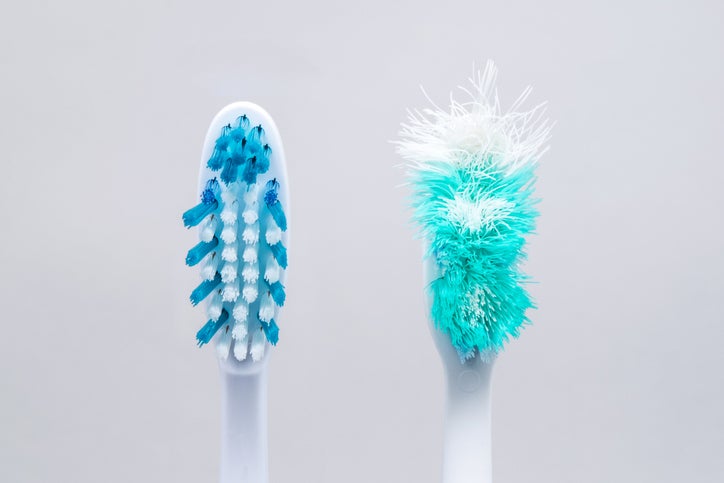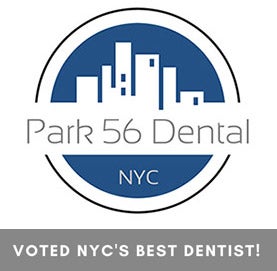How Often to Replace Your Toothbrush
You might brush your teeth twice a day, but how closely do you look at the bristles before sticking them in your mouth? Get the most out of your oral care routine by taking care of your toothbrush and replacing it as needed.

When to Replace Your Toothbrush
The American Dental Association (ADA) recommends changing your toothbrush every three months. This is about how long it takes for the bristles to become frayed. When this happens, your toothbrush loses the ability to scrub your teeth and remove plaque effectively, making you more vulnerable to cavities and gum disease.
It’s also possible for germs to build up within the bristles. That’s why you should also replace your toothbrush after being sick. Continuing to use the same one could make you sick again. For this reason, it’s wise to have a backup toothbrush or two in your medicine cabinet.
Take Care of Your Toothbrush
You must clean and store your toothbrush properly to keep fungus and bacteria at bay. Start by rinsing it thoroughly after each use to remove all traces of saliva and toothpaste.
Then, store the toothbrush upright and uncovered so it dries quickly. Choose a location as far away from the toilet as possible to prevent fecal matter from settling on the bristles. Don’t share your toothbrush with anyone, and keep each family member’s toothbrush separate from one another so the bristles don’t touch and spread germs.
Only cover your toothbrush while traveling to prevent it from touching unsavory surfaces. Even then, only pack your toothbrush in a travel case when it’s completely dry.
If you’re concerned about germs, you can use a toothbrush sanitizer. This kills bacteria using steam and dry heat or UV light. While these methods aren’t enough to sterilize your toothbrush, they remove enough oral bacteria to sanitize or disinfect the bristles.
How to Shop for a New Toothbrush
If you realize it’s been more than three months since you replaced your toothbrush, it’s time to go shopping. The most important qualities to look for in a new toothbrush are soft bristles and a small head to get in hard-to-reach places. Other characteristics—including the handle type, head shape, and bristle features—come down to personal preference.
You might also consider investing in an electric toothbrush. The incredibly fast-moving bristles are shown to remove 21 percent more plaque and reduce the risk of gingivitis by 11 percent. Powered toothbrushes are easier for children and people with arthritis to operate. They also have removable heads, which you should replace every three months like an ordinary toothbrush.
If you’re unsure about how to care for your toothbrush or what products you should include in your oral care routine, ask your dentist for recommendations. Your professional cleaning twice a year is a great time to find out more about maintaining a beautiful smile. To schedule a complimentary consultation at Park 56 Dental, please contact our NYC dentist office at (212) 826-2322 today.
RECENT POSTS
categories
- Uncategorized
- Cosmetic Dentistry
- Veneers
- Healthier Teeth
- Teeth Whitening
- Dental Health
- Video
- Dental Emergencies
- Invisalign
- Dental Implants
- Root Canal
- Sedation Dentistry
- Infographic
- Dental Crowns and Bridges
- Dental Anxiety
- Gum Disease
- COVID-19
- Bad Breath
- New York Dentist
- Cut out sugar
- General Dentistry
- Oral Health
- Oral Cancer
- Dry Mouth
- Gum Health
- Toothache
- Dental Sealants
- Cavities
